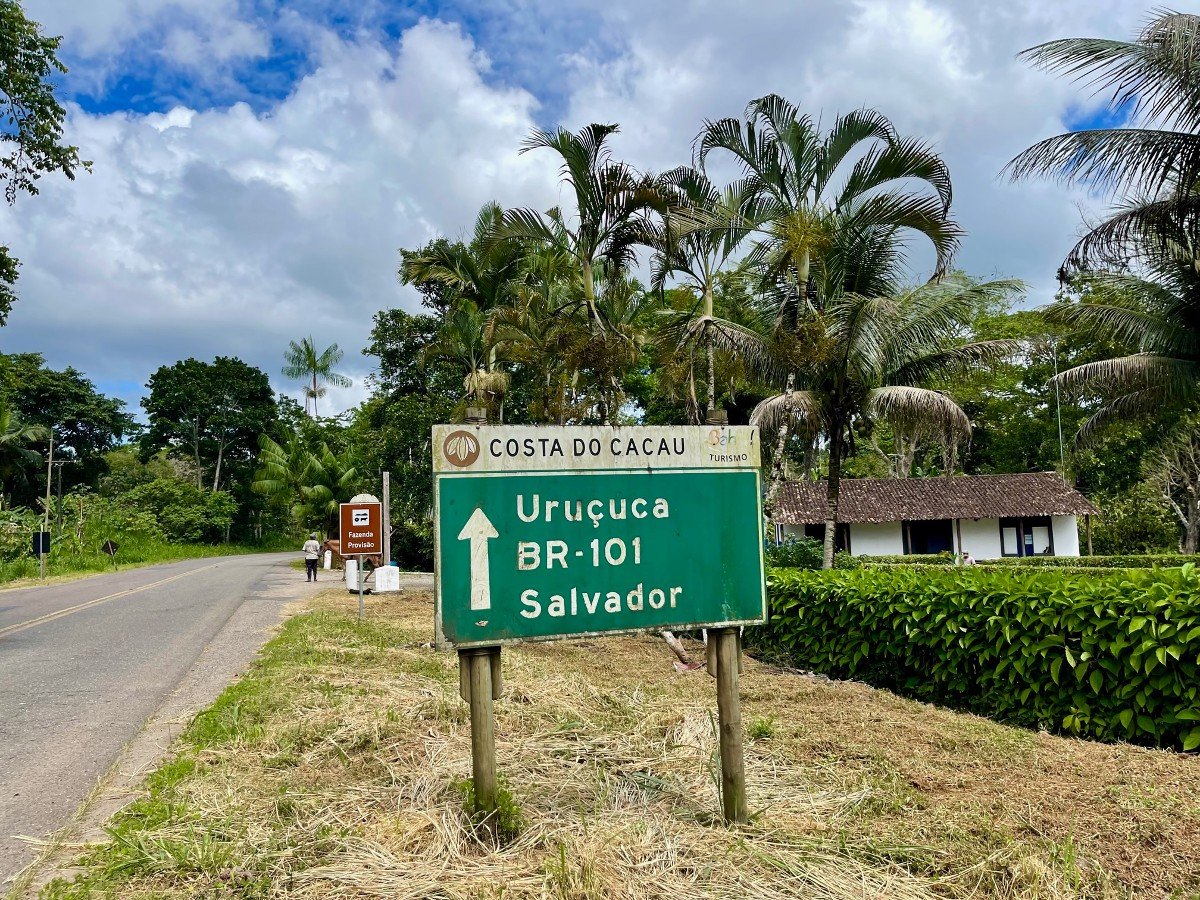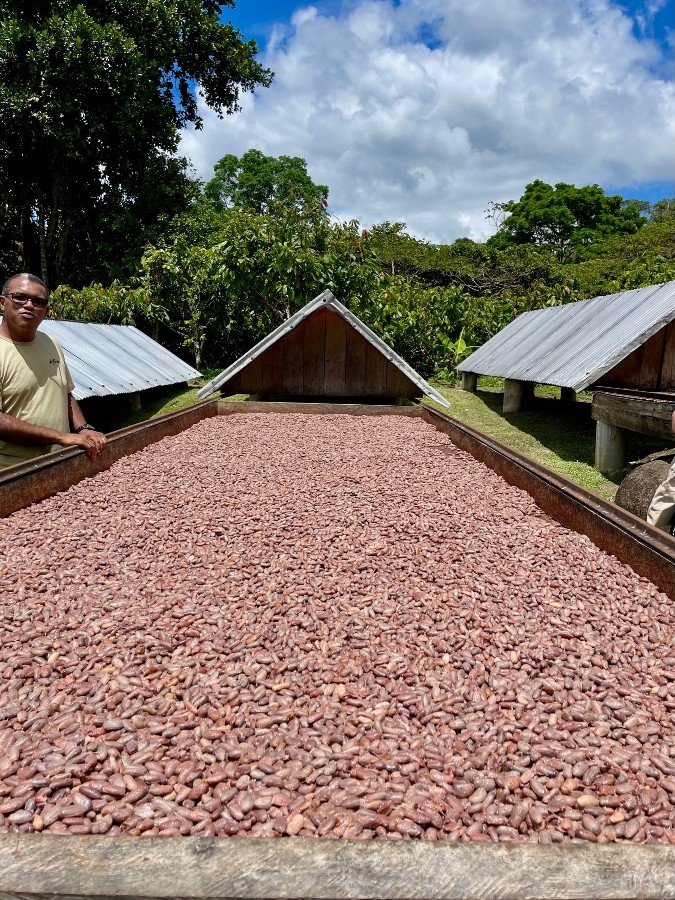Cacau
Cacau, the raw material for chocolate, was discovered growing wild in the Amazon by the Jesuits in the 1500s, and at first they simply collected the wild fruits through the labor of indigenous and enslaved people. They later began to cultivate cacau, but only had modest output. The Portuguese Crown later forbid Jesuit production of cacau and subsequently expelled the order from the colony, enabling Portuguese monopoly of the matéria-prima of chocolate.
The cultivation of cacau was moved to the state of Bahia in 1746, where it was a minor crop compared to the vast plantings of sugar cane. The story of cacau cannot be disentangled from the bitter history of slavery, and neither sugar nor cacau production would have been possible without vast numbers of enslaved people forced to labor and enrich their enslavers. From the 15th to the 19th century more than 4 million people from different parts of the African continent involuntarily disembarked on Brazilian soil. Compare this with the 550,000 people captured and sold into slavery in the United States. It is a shameful history in both the northern and southern hemispheres, but the enormity in Brazil is hard to imagine, where slavery was not outlawed until 1888.
Bahia became the world’s leading producer of cacau and flourished into the 1980s, when the major cacau area of Brazil was the southern part of Bahia state, in the hills outside of Ilhéus. The huge plantations made their owners rich and politically powerful.
In 1989 a disease called vassoura-de-bruxa, or witch’s broom, spread like wildfire. This fungus, moniliophthora perniciosa, devastated cacau plantations, destroying 75% of the trees and turning Brazil from the world’s third largest exporter of cacau to an importer. Police investigation found that the fungus was deliberately set in the large plantations by persons hoping to reduce the power of the plantation owners, but it spread beyond the large farms to smaller holdings and all species of wild cacau.
Cacau farming near Ilhéus has made a comeback since the 1990s due to dedicated new owners and rising demand for artisanal chocolate, called the “bean to bar” or “tree to bar” movement. Management of the forests is more ecological by necessity, as this keeps the fungus under control. Cacau is planted beneath a canopy of larger trees, a practice called cabruca, and regularly pruned. Leaves are mulched beneath the trees, breaking down into organic nutrients. This new approach also helps preserve part of the green corridor than runs the length of Brazil’s coast, the Mata-Atlântica, the Atlantic Forest, a threatened biodiverse treasure.
I was in Ilhéus for a beach vacation with friends recently, and we visited the Fazenda Capela Velha and saw the process of cacau farming and chocolate production firsthand. We headed north up the coast from my friends’ family home near the beach and took a left turn on BA 262, the Estrada do Chocolate, the chocolate road. The farm is between Ilhéus and Uruçuca, a lovely drive amid the Mata-Atlântica, towering trees with bromeliads in the crooks of their trunks, their branches festooned with hanging Spanish moss (or at least that’s what it’s called in the Southern US).
The tour was very comprehensive and our guide, part of the team, was entertaining and knowledgeable. The fazenda’s motto is “nada se perde, nada se transforma.” Nothing is lost, nothing is transformed.
The gorgeous cacau trees were studded with blossoms spiking directly off the trunks like little pink stars.
Cacau tree in bloom
Of course we start with the trees, amid the protective canopy that provides shade and just the right humidity: the cabruca.
Tall trees provide shade and humidity.
Cacau fruit suspended off the trunk.
Halved fruit with cacau seeds—they are edible raw.
The seeds are removed from the husk and fermented. This farm uses a completely anaerobic process for fermentation. The owner, Carlos Tomich, explains that the raw seeds are removed, but the beans are encapsulated in a slippery husk—and it is beans that are needed to move from the raw cacau toward cocoa, in order to produce chocolate.
A traditional fermenting table, with a sliding roof to adapt heat and humidity. Modern practices use barrels made of inert material with strict control of conditions.
The barcaça, a traditional cacau drying shed. The farm uses carefully controlled mechanical drying.
The seeds are then roasted, crushed and refined, and made into chocolate.
Packaging the final product. White chocolate is really chocolate!








